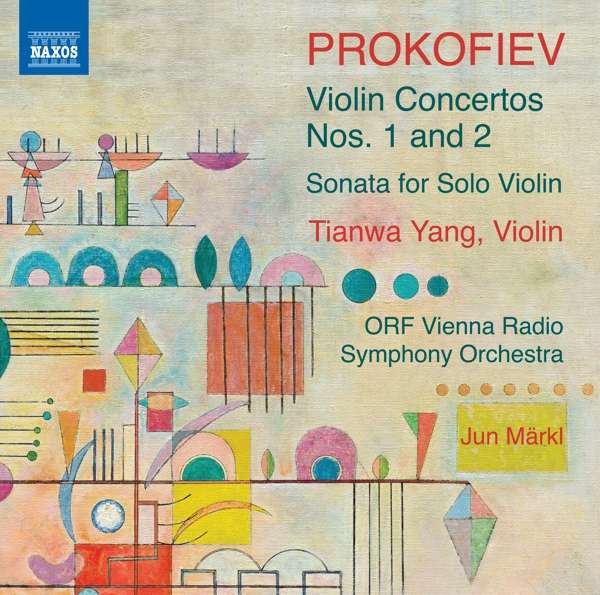Dass mit Tianwa Yangs ebenso virtuosem wie betörend intensivem Geigenspiel die beiden Prokofiev-Konzerte zu einem besonderen Genuss werden würden, war zu erwarten. Hinzu kommt, dass die Violinistin in Jun Märkl einen kongenialen Partner gefunden hat, um mit ihm zu einer spürbar harmonischen und sehr farbigen Interpretation zu finden.
Bereits der Beginn des 1. Konzerts lässt aufhorchen. Es ist, als komme der reich und ungewohnt eingefärbte, lichtvolle Klang von weit her, irgendwo aus dem Jenseits, um sich in einen verspielten Tanz zu entwickeln, in dem es spannungsvoll funkt und blitzt. Der zweite Satz macht nicht den Eindruck eines atemlosen musikalischen Wettlaufs, wie man ihn sonst manchmal hört, sondern Tianwa Yang entwickelt darin einen sehr beschwingten und lebensfrohen Tanz mit viel Humor. Der mitunter etwas skurrile Finalsatz wird sehr differenzierend gestaltet, hat aber immer einen positiven Grundton.
Nicht weniger reizvoll erklingt das 2. Prokofiev-Konzert, das von der Geigerin sowohl großes technisches Können als auch Kantabilität verlangt. Die bizarren Tanzrhythmen und die lyrischen Partien dieses Konzerts werden überzeugend zu einem homogenen Ganzen gefügt. Zusammen mit dem Raffinement des Spiels der Solistin schafft das kräftige, pulsierende Musizieren des Wiener Radio-Symphonieorchesters unter Jun Märkl eine atmosphärische Dichte, die dem Konzert ein ganz besonderes Espressivo verleiht.
Sehr stimmungsvoll wird auch die Solosonate op. 115 gespielt. Tianwa Yang bemüht sich, der bei anderen Interpreten manchmal etwas kühl wirkenden Sonate Leben einzuhauchen und sie farblich und rhythmisch sehr reich werden zu lassen.
It was to be expected that with Tianwa Yang’s equally virtuosic and beguilingly intense violin playing, the two Prokofiev concertos would be a special treat. In addition, the violinist found a congenial partner in Jun Märkl, with whom she achieved a noticeably harmonious and very colorful interpretation.
Already the beginning of the First Concerto is remarkable. It is as if the richly and unusually colored, light-filled sound comes from far away, somewhere from beyond, to develop into a playful dance, in which it sparks and flashes excitingly. The second movement does not give the impression of a breathless musical race, as one sometimes hears, but Tianwa Yang develops in it a very lively and lively dance with a lot of humor. The sometimes somewhat whimsical final movement is shaped in a much differentiated manner, but always has a positive underlying tone.
The Second Concerto is no less charming, demanding both great technical skill and cantabile from the violinist. The bizarre dance rhythms and the lyrical parts of this concerto are convincingly blended into a homogeneous whole. Together with the refinement of the soloist’s playing, the powerful, pulsating music-making of the Vienna Radio Symphony Orchestra under Jun Märkl creates an atmospheric density that gives the concerto a very special espressivo.
The solo sonata op. 115 is also played very atmospherically. Tianwa Yang makes an effort to breathe life into the sonata, which sometimes seems a bit cool with other interpreters, and to make it very rich in color and rhythm.




















